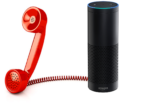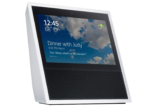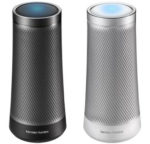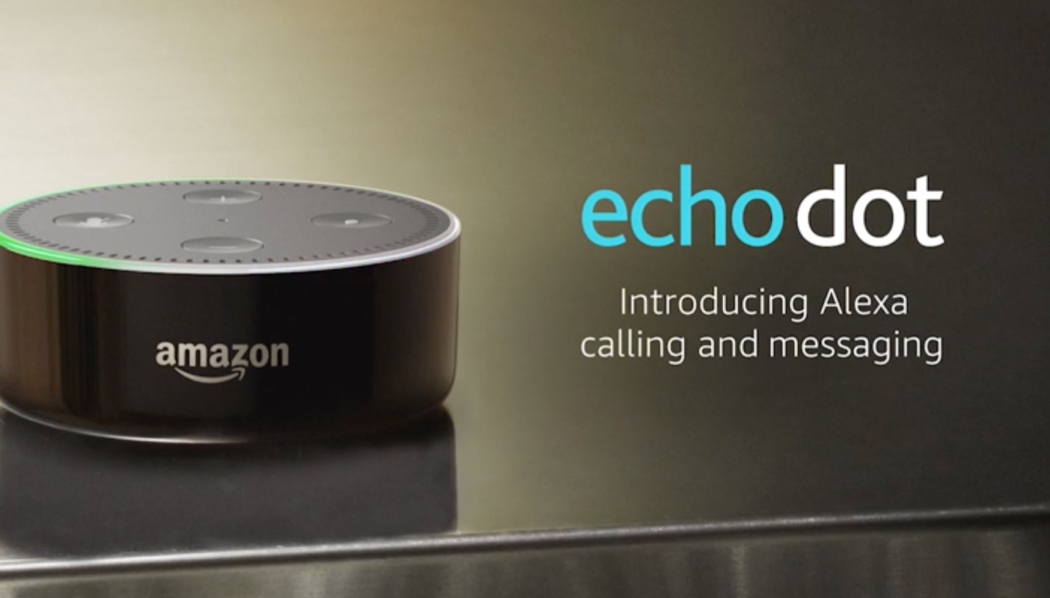Amazon Alexa Calling and Messaging is a Great Feature That Puts Rivals on Defensive
The hullabaloo about the Echo Show being the first home-based voice assistant with a screen overshadowed the bigger story this week. Amazon released voice calling and messaging features through Alexa. Microsoft’s planned integration of Skype calling with Cortana and new smart speakers from Harman Kardon and HP were supposed to differentiate it from Amazon Echo and Google Home. However, Amazon beat everyone to market once again.
Call People from Your Echo
This may well be the killer app feature that Amazon has been looking for to support continued Amazon Echo user growth. It may also be the first viral aspect to Echo and the closest you can come to viral adoption for hardware based devices which are not instantly available to you.
At a time of year when people are not necessarily looking to buy a new electronic device, Amazon just gave them a reason to buy an Echo. Think about it this way. The first Facebook account wasn’t valuable at all. The second Facebook account was valuable if you were interested in the first person. With each subsequent person that joined the social network, it became more valuable to everyone in the network and everyone considering whether to join. The same was true of LinkedIn and fax machines in an earlier era. In the early days of the internet we called this phenomenon Metcalf’s Law, but people today are more likely to refer to it as network effects. Now you can call or message people in your contacts directly to their Echo or Alexa app. Network effects have been introduced into the voice assistant ecosystem. Everything has changed.
Bringing The Phone Back into the Home
 My friends at XAPPmedia are fond of saying that Amazon Echo is bringing radio back into the home. This is true. Radios used to be a staple of every household. They were in the bedroom, kitchen and often many other locations throughout the house. The advent of iPods, Sonos and music streaming services on smartphones began displacing radios more than a decade ago. Fewer and fewer households retained their radios and those that remained were used less frequently.
My friends at XAPPmedia are fond of saying that Amazon Echo is bringing radio back into the home. This is true. Radios used to be a staple of every household. They were in the bedroom, kitchen and often many other locations throughout the house. The advent of iPods, Sonos and music streaming services on smartphones began displacing radios more than a decade ago. Fewer and fewer households retained their radios and those that remained were used less frequently.
Smartphones have led to a similar trend in household telephone ownership. A decade ago nearly every home had a fixed telephone line. RAND Corporation reported last year that only 49% of US households had a fixed telephone line. People are relying more and more on their smartphones and many only use smartphones for communication. The Echo has put radio and music back in physical household spaces like the kitchen and now it is doing the same for phone service.
Some people think this is redundant since you already have mobile phone with you all of the time. Many of these same people suggested that you don’t need a smart speaker like Amazon Echo because you have all of those services available on your smartphone or soon will. However, this is about ambient computing and communications that are in the spaces we inhabit as opposed to the device we carry. There is real utility to that hands free, eyes free, personal device free computing access.
The Echo Show Adds to the Story

Amazon Echo Show
The Amazon Echo Show with its touchscreen and voice interface was tantalizing for people to think about. I am certain the Apple crowd in Cupertino were sitting there saying, “Well, Amazon just built an unattractive device with Facetime. Welcome to 2010.” However, that thinking really misses the point. This is about having fixed infrastructure in the home that provides computing and communications access wherever you are, through a voice interface and sometimes through video or display. It’s not about carrying that capability in your pocked or on your tablet. It is a truly hands free experience.
When I interviewed Mike Elgan, he suggested that our future would be AI-backed voice assistants with omnipresent microphones–maybe in lightbulbs–and large screens everywhere in the home and buildings so we could switch between audio and visual interaction at anytime. The Echo Show is simply an immature version of that vision, but it starts the process. At $229, these won’t be placed in every room in most households, but a couple may well complement a half-dozen Echo Dots littered throughout the home.
Punking Microsoft with Calling

The new Invoke speaker by Harman Kardon with Microsoft Cortana
The introduction of the Echo Show and the calling and messaging features were well timed. Microsoft Cortana has a lot of momentum with business users. Voicebot was first to report that Cortana had 140 million monthly active users, far more than Amazon Alexa or Google Assistant today. Microsoft’s first home-based smart speaker was set to debut this week, and did, at the company’s developer conference, Build. The Harmon Kardon device with Cortana was supposed to be differentiated in part through Skype integration. That would give it a calling feature that the early market entrants Amazon and Google still had not delivered.
The day before the Build conference, Amazon released the Echo Show for pre-orders for June delivery and also quietly added calling and messaging for all Echo owners immediately. Microsoft has impressive technology and unique assets to leverage, but it was overshadowed by the Amazon announcements. Microsoft will still be playing catch-up for some time. The initial Harman Kardon device won’t be available until the fall and the announced HP devices are surely even further from launch. Many people thought that the voice assistant and natural language understanding were the only hurdle to climb. It turns out the hardware and far-field microphone technology is also difficult and slowing other companies as the try to enter the market.
Punking Google Whenever The Opportunity Arises
Amazon is starting to form a pattern of announcements just before expected news from its voice assistant rivals. Shortly before Google announced Google Home at a $129 price point last fall, Amazon cut the price of Echo Dots to $49. The company also announced that it was moving into the UK and Germany. As Mobile World Congress was approaching and Google was set to announced broader availability of Google Assistant to Android smartphone users, Amazon announced it had surpassed 10,000 Alexa skills. The announcement this week before the Build conference also was timed to put Google on its heals a week before its own I/O developer conference.
Google has been quiet and the assumption is that new features and maybe new products will be announced next week. Maybe Google will leap frog the Amazon product portfolio, but that seems unlikely. If the company announces a calling feature through Google Home it will have two headwinds. First, it is about catching up to Amazon. Second, there are far fewer Google Home devices in the market so the consumer utility is not as high–back to those network effects.
Amazon Just Got Hundreds of Millions of Phone Numbers
This may not be a big deal, because Amazon already has contact information for hundreds of millions of people. However, it previously didn’t have insight into how those people were connected. With 7-10 million people providing contact address book access to Amazon for Echo connectivity, the company just received many more consumer contact details and insight into social relationships between people. Part of the reason messaging apps are so valuable is this very information.
Alexa Just Became More Sticky
The other thing that calling and messaging do is make Alexa usage more sticky and frequent. When you and your parents both have Echo (and maybe Show) you are less likely to switch out to Google Home and lose that connectivity. In addition, communication is a high frequency activity. It will further integrate Alexa into people’s lives through repetition and habit formation.
Pressing The Advantage
All of these activities are about pressing the advantage of early market entry and early market share leadership. eMarketer came out earlier in the week with a forecast that Amazon Echo would command 71% of the smart speaker market at the end of 2017. Google would trail by a large margin and Microsoft, Apple and others would be fighting over less than 6% share. That is a strong statement about Amazon’s position.
However, it actually understates where Amazon Echo is today. It is likely that Amazon Echo commands north of 90% market share and the 71% estimate was a reflection of eMarketer’s prediction that the other manufactures will chip away at that lead as the market grows. Amazon’s feature advantage just grew this week. That will make it harder for rivals to chip away at Amazon Alexa’s leadership position. The heat is on for rivals to show progress. Then again, the market is still early as only about 10% of users have made their smart speaker choice.









